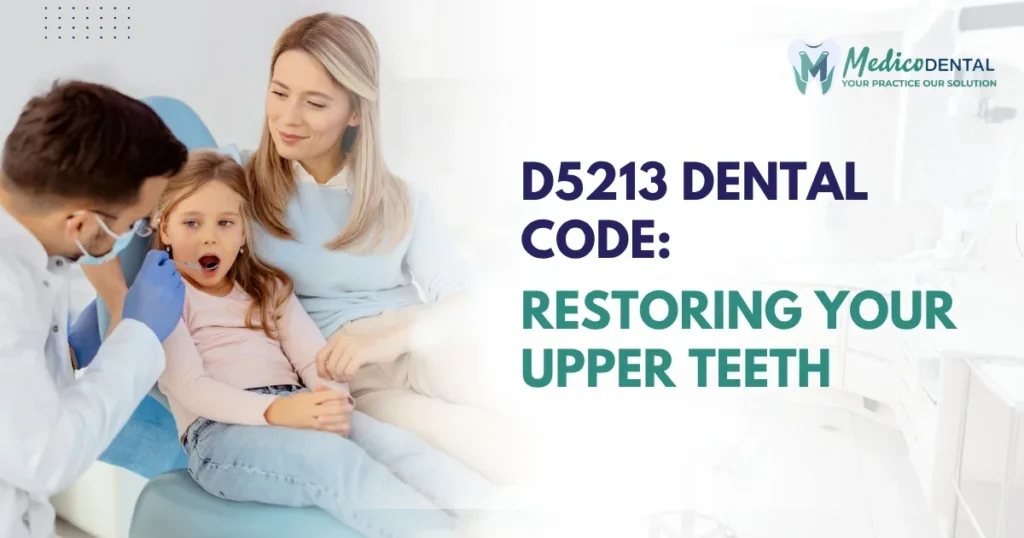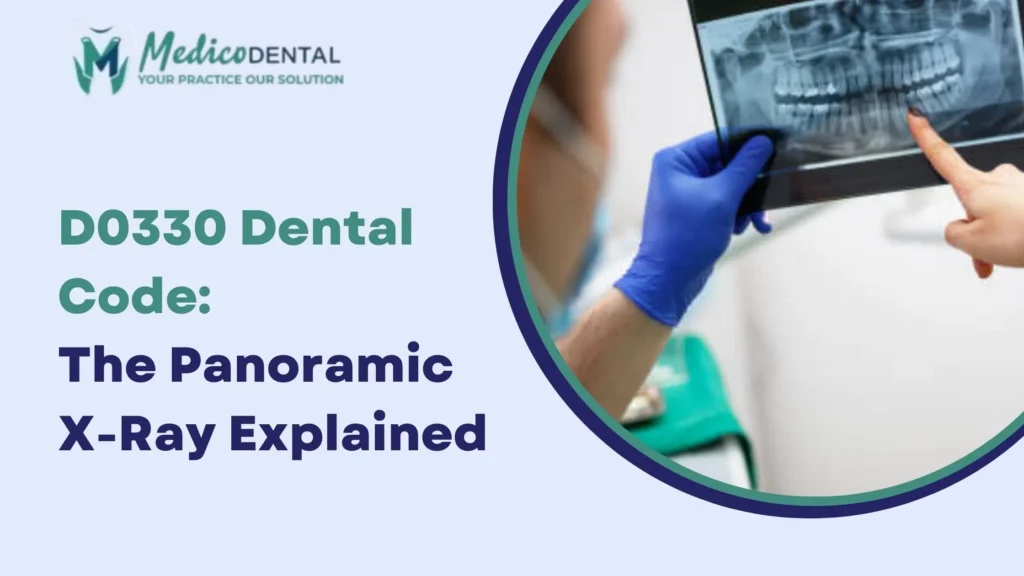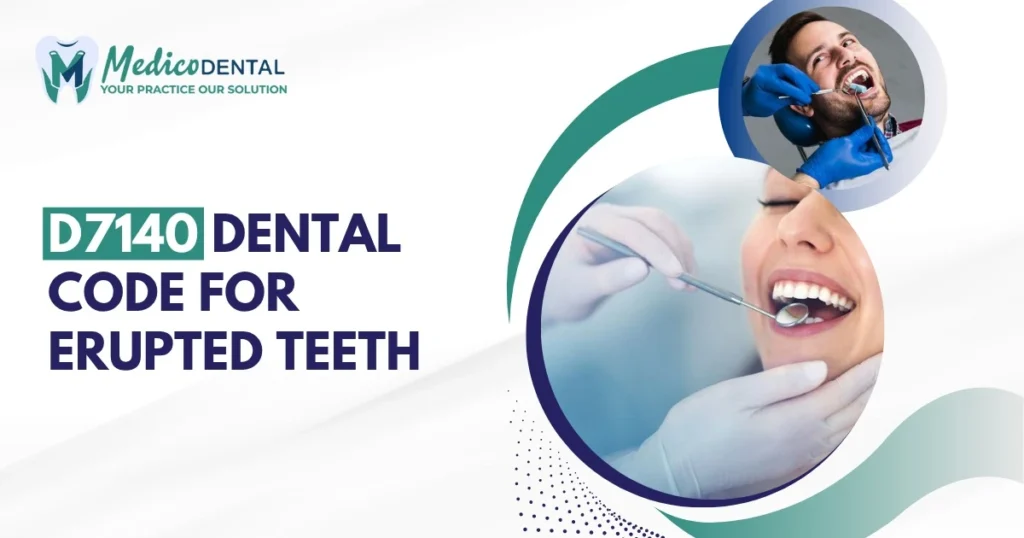The D5213 Dental Code is an essential code used in dentistry, specifically when treating patients who have missing teeth in the upper jaw. This code refers to a maxillary partial denture with a cast metal framework and resin denture bases, which includes the necessary clasps, rests, and teeth. Understanding this code is crucial for both dental professionals and patients, as it streamlines the treatment process, ensures proper billing, and helps restore functionality and aesthetics to the smile. In this article, we’ll explore the procedure, benefits, and when this code should be used in detail.
What is the D5213 Dental Code?
The D5213 Dental Code is used for a specific type of dental procedure: the placement of a maxillary partial denture. This denture is designed to replace missing teeth in the upper jaw (maxilla) using a combination of a cast metal framework and a resin denture base. The denture is custom made to fit the patient’s mouth and can include retentive clasps, rests, and teeth. Essentially, it serves as a removable solution for individuals who have lost multiple teeth in their upper jaw but still have some remaining natural teeth to support the denture.
The Procedure: Maxillary Partial Denture Placement
The procedure for placing a maxillary partial denture typically involves several steps to ensure that the denture fits comfortably and functions properly. Here’s a breakdown of the process:
Initial Consultation
The dentist will examine the patient’s oral health, taking x rays and impressions of the mouth to assess the degree of tooth loss and determine if a partial denture is the best solution.
Impression Making
The dentist will create detailed impressions of the upper jaw to ensure the denture fits precisely over the existing teeth.
Denture Design
A dental lab will use the impressions to design and create a custom denture. This involves constructing the cast metal framework and ensuring the resin base and teeth are designed to match the patient’s bite and aesthetics.
Fitting and Adjustment
Once the partial denture is ready, the dentist will fit it to the patient’s mouth. Adjustments are often made to ensure comfort, correct alignment, and proper occlusion.
Final Placement
After any final adjustments, the denture is securely placed, and the patient is given instructions on care and maintenance.
When is D5213 Dental Code Used?
The D5213 Dental Code is typically used when a patient has lost several teeth in the upper jaw but still has some remaining natural teeth to support the denture. It is commonly applied in the following scenarios:
Multiple Missing Teeth
When a patient has several missing teeth in the upper jaw and needs a functional and aesthetic solution to restore their smile.
Partial Tooth Loss
For individuals who are not candidates for full dentures but require a partial denture to fill gaps left by missing teeth.
Restoring Function and Aesthetics
The code is used when the goal is to improve the patient’s ability to chew and speak while also enhancing their facial appearance.
It’s important to note that the D5213 code applies specifically to maxillary partial dentures with a cast metal framework. If the denture is for the lower jaw or uses a different framework, another code (like D5214) may be applicable.
Benefits of Using D5213 for Restoring Upper Teeth
The D5213 Dental Code provides several significant benefits for patients seeking to restore missing upper teeth:
Improved Functionality
A maxillary partial denture helps restore the ability to chew food more effectively, which can greatly improve a patient’s diet and nutrition.
Aesthetic Enhancement
The denture not only restores function but also enhances the appearance of the patient’s smile by filling in the gaps left by missing teeth.
Comfort and Fit
The use of a cast metal framework ensures that the denture is both durable and comfortable. The resin base provides a natural appearance and comfortable fit for the patient.
Minimally Invasive
Unlike Prosthetics Dental Code for Implants or other restorative procedures, placing a partial denture is a non invasive process that doesn’t require extensive surgery, making it a more affordable and accessible option for many patients.
Durability and Longevity
The materials used in D5213 dentures are strong and designed to last, providing a long term solution for tooth loss without the need for frequent replacements.
By using the D5213 Dental Code, dental professionals can offer a cost effective and efficient solution to patients who need to restore missing teeth while maintaining a high level of comfort, function, and appearance.
Related Dental Codes to Know
Understanding the D5213 Dental Code is important, but it’s also essential to be familiar with other related dental codes that might be applicable depending on the patient’s needs. Here are some key related codes to know:
D5214: Mandibular Partial Denture – Cast Metal Framework with Resin Denture Bases
This code is used when creating a partial denture for the lower jaw (mandible). Like D5213, it involves a cast metal framework with resin bases, but it’s specifically for the lower teeth. This is important for patients who may need a similar treatment on the lower jaw instead of the upper jaw.
D5211: Maxillary Partial Denture – Resin Base
This code applies to maxillary partial dentures that do not have a metal framework. Instead, the base is entirely made of resin. It’s used for patients who need a partial denture for their upper teeth but prefer a lighter, resin based alternative rather than a cast metal framework.
D5212: Mandibular Partial Denture – Resin Base
Similar to D5211, this code applies to mandibular partial dentures with a resin base for the lower jaw. It’s a cost effective option for patients who need partial dentures in the lower jaw without the metal framework.
These related codes help differentiate between different types of partial dentures and whether the procedure involves the upper or lower jaw, as well as whether the framework is metal or resin based. It’s important for dental professionals and patients to understand these variations to ensure the correct procedure and billing code are used.
Insurance and Billing: What You Need to Know
When it comes to insurance and billing for the D5213 Dental Code, there are a few key points to consider:
Prior Authorization
Many dental insurance providers require prior authorization before proceeding with procedures like partial dentures. This means that the dentist will need to submit the treatment plan and the use of the D5213 code for approval before the procedure can be performed. It’s essential for patients to check with their insurance provider to confirm the need for authorization and to ensure the procedure is covered.
Coverage
Not all insurance plans cover partial dentures or the materials used. Some plans may have limits on the amount they will pay for a partial denture, while others might cover it as part of their prosthodontic benefits. Patients should inquire about their plan’s coverage for partial dentures and whether it includes D5213.
Out of Pocket Costs
If the procedure is not fully covered, there may be out of pocket costs that the patient needs to pay. These costs can vary based on the insurance provider and the materials used for the denture. It’s a good idea for patients to discuss costs upfront with their dentist’s office, as some may offer payment plans or financing options.
Billing Process
After the procedure, the dentist will submit a claim to the insurance company using the D5213 code. The insurance company will then process the claim and reimburse the dentist directly. Patients may be responsible for any remaining balance not covered by insurance.
By understanding the insurance requirements and billing procedures, patients can be better prepared for the costs and ensure that they’re receiving the appropriate coverage for their procedure.
Example: A Real Life Scenario of D5213 Code Application
Let’s walk through a practical example of how the D5213 Dental Code is applied:
Scenario:
Sarah, a 56 year old woman, has been struggling with missing teeth in her upper jaw. She feels self conscious about her smile and has difficulty chewing certain foods. After a consultation with her dentist, it is determined that a maxillary partial denture would restore both her smile and functionality.
The Process:
- Sarah’s dentist uses the D5213 code to prescribe a maxillary partial denture with a cast metal framework and resin base. The framework will support the denture, and the resin base will provide a natural looking appearance.
- The dentist submits the treatment plan to Sarah’s insurance provider, who approves the procedure after reviewing the claim.
- After the denture is fabricated, Sarah returns for fittings and adjustments to ensure the denture fits comfortably and functions properly.
- Sarah’s insurance covers part of the procedure, but she is responsible for a portion of the cost, which she finances through a payment plan offered by the dental office.
Outcome:
Sarah is thrilled with the result. Her new partial denture improves her ability to eat and talk, and it boosts her confidence. She’s happy with her restored smile and appreciates the professionalism and care provided by her dental team.
Why Consulting a Dental Professional is Essential
Before proceeding with any dental treatment, including D5213 for a maxillary partial denture, it is crucial to consult a dental professional. Here’s why:
Accurate Diagnosis
A dental professional will assess your overall oral health and determine if a partial denture is the best solution for your missing teeth. They will consider factors such as the number of teeth missing, the health of the remaining teeth, and your overall oral health before recommending a treatment plan.
Personalized Treatment Plan
Every patient’s needs are different. A dental professional will create a custom treatment plan tailored to your specific requirements, ensuring that the denture fits properly, feels comfortable, and looks natural.
Avoiding Complications
Professional consultation helps avoid potential complications that may arise from improper fitting or inadequate treatment. Dentists ensure the denture fits correctly and provides optimal functionality, avoiding discomfort or damage to the remaining teeth.
Understanding Your Options
A dentist can explain the different types of dentures available, such as resin base or cast metal framework dentures, and help you choose the right option based on your needs, preferences, and budget.
Consulting a dentist ensures that you receive the best possible care and guidance for your dental health, providing long lasting results.
Conclusion
The D5213 Dental Code plays a crucial role in restoring upper teeth for individuals with missing teeth in the maxilla. By understanding the procedure, related codes, and insurance considerations, both patients and dental professionals can ensure that the treatment is effective and well managed. Remember that proper consultation with a dental professional is essential to ensure the best treatment plan and outcome. Whether you’re seeking to improve function, aesthetics, or both, the D5213 code offers a reliable and cost effective solution for restoring your smile and overall oral health.



